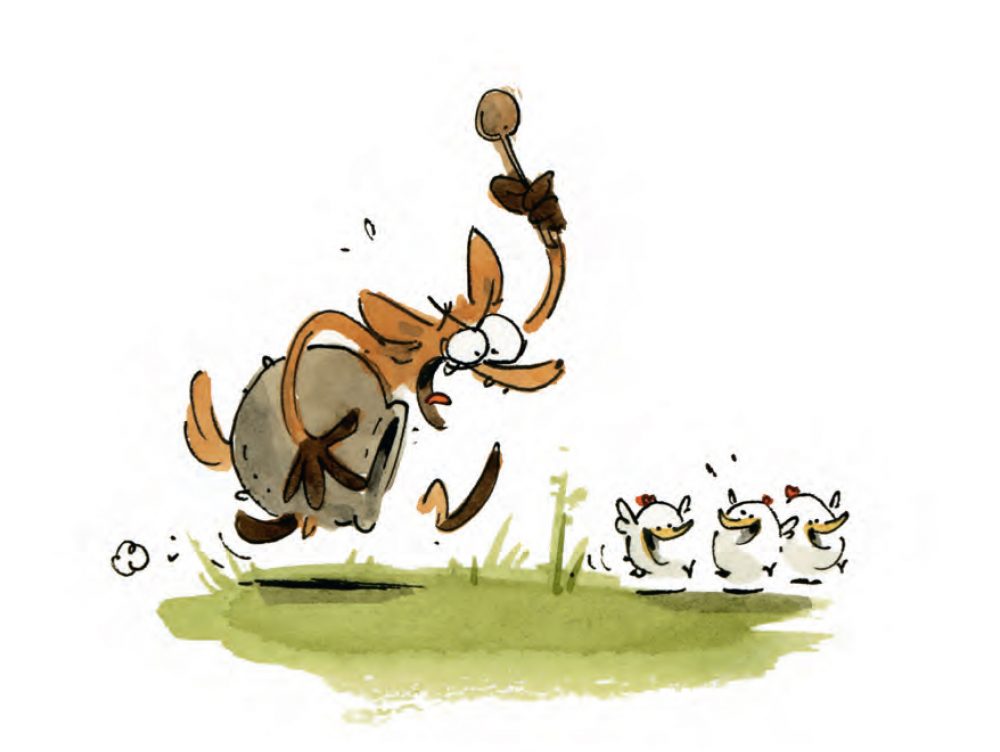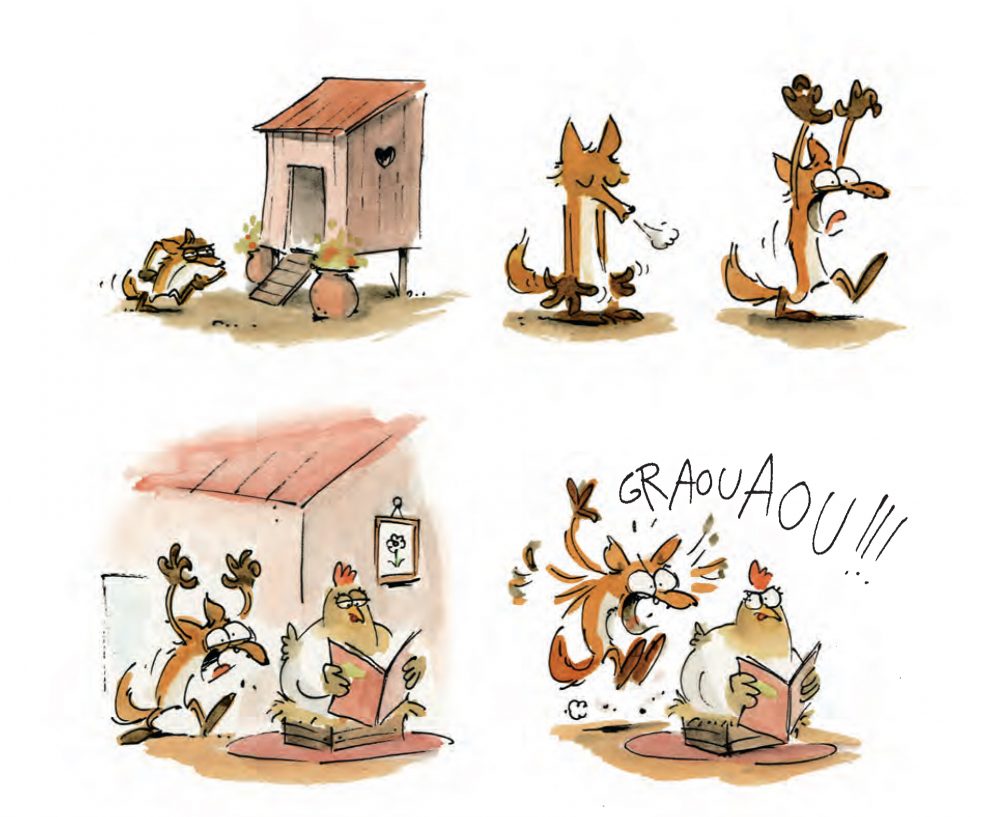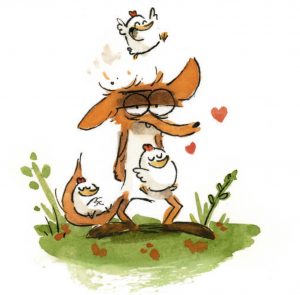In 2012, Benjamin Renner, Vincent Patar, and Stéphane Aubier co-directed and released Ernest & Celestine, a French animated feature film based on a series of children’s books by Belgian author Gabrielle Vincent. The heartwarming story, which features an adventurous young mouse and a hungry bear, was critically lauded around the world. The film won an award at Cannes and was even nominated for an Academy Award in 2013.
Now, one of the directors, Renner, has returned to the creative stage with Big Bad Fox, a graphic novel set to be published in the United States by First Second. The comic focuses on the eponymous fox, who is unable to satisfy his predatory urges thanks to “a stupid rabbit, a gardener pig, a lazy dog, and a bossy chicken.” Thus, he hatches a plot: steal chicken eggs, “raise the chicks, scare them, and eat them. But things don’t go exactly as he planned…”
Renner says that “Big Bad Fox is a light-hearted comedy that I intended for the children and their parents. It was a pleasure to write this story and I can’t wait to share it with the US readers. I hope they will have as much fun reading it as I had fun drawing it.”
Featuring effortlessly beautiful watercolor artwork and a brilliantly devious story, Big Bad Fox is sure to entertain readers of all ages. Featuring effortlessly beautiful watercolor artwork and a brilliantly devious story, Big Bad Fox is sure to entertain readers of all ages. Check out our exclusive Q&A with Renner after the jump!
Alex Lu: Benjamin, you achieved some impressive notoriety with Ernest & Celestine‘s Academy Award nomination for best animated picture in 2014. As someone who has garnered great success in animation, what made you decide to tell the story of Big Bad Fox as a comic instead of as an animated film or short?
Lu: Some people might say that comics are like animation stills, though the two mediums are in truth, worlds apart. In your words, what unique tools and strengths do comics have to offer you that allow you to fully express your vision for Big Bad Fox?

Lu: Your stories, both in comics and in animation, are predominantly centered around animals. What draws you to them as an artist?
Lu: As a storyteller, you imbue these animals with distinctly human emotions. What do you think that stories featuring animals who feel like humans can offer us that stories that only feature people don’t?
Lu: The character designs in Big Bad Fox are distinctly separate from those in Ernest and Celestine. How would you characterize these differences and how does your stylistic choices here play into the story you tell?

Lu: In stories, from the time of folklore and fable to 2016 with Disney’s Zootopia, foxes are often portrayed as cunning and capable tricksters. Your Big Bad Fox initially seems similar, but turns out to be something less than competent. Did you set out to turn the stereotype on its head when you wrote this story?





He got an award at Angoulême for that comic, so it must be fine,
 ,840琉璃瓦机; 彩钢瓦生产设备机械厂家联系人: 手机:13832771638王女士  ,泊头金; 15133711101祁先生 QQ: 59458991 座机:0317-8086188 传真:0317-8086188 压型钢板型号 51-420-840 ī
彩钢瓦生产设备机械厂家联系人: 手机:13832771638王女士  ,嫁给富豪的; 15133711101祁先生 QQ: 59458991 座机:0317-8086188 传真:0317-8086188  ,挡风抑尘设备; 压瓦机|止水板|cࣁ
He got an award at Angoulême for that comic, so it must be fine,
Comments are closed.